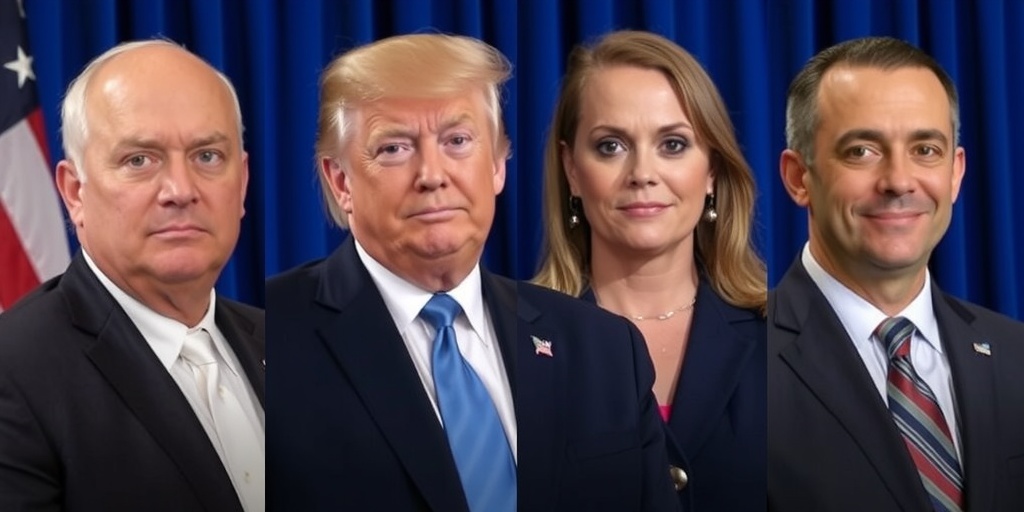Now Reading: Trump Asserts Authority to Dismiss Administrative Law Judges at Will
-
01
Trump Asserts Authority to Dismiss Administrative Law Judges at Will
Trump Asserts Authority to Dismiss Administrative Law Judges at Will

Trump Administration Claims Power to Dismiss Administrative Law Judges: A Challenge to Legal Protections
On Thursday, the Trump administration informed Congress of its belief that President Trump possesses the constitutional authority to fire administrative law judges (ALJs) summarily, without cause. This assertion comes despite existing laws designed to protect these judges from being removed except for specific reasons such as misconduct. The administration’s statement marks another significant move in its ongoing effort to reshape the federal government’s structure and limit Congress’s ability to keep certain executive branch officials insulated from political interference by the executive.
The viewpoint was articulated in a letter addressed to Congress by Sarah M. Harris, the acting solicitor general. Administrative law judges perform essential functions within various executive branch agencies, presiding over administrative hearings and executing judicial-like responsibilities, such as administering oaths, taking testimony, making evidentiary rulings, and determining legal and factual issues. Examples of these judges can be found across multiple sectors, including Social Security Administration judges who adjudicate disputes regarding disability and retirement benefits, judges from the National Labor Relations Board who address unfair labor practice cases, and Federal Energy Regulatory Commission judges who resolve conflicts related to matters like electric utility regulations and grid management.
In an effort to shield these officials from undue political influence, Congress enacted a statute that stipulates that disciplinary actions, including firings, against administrative law judges can occur "only for good cause established and determined by the Merit Systems Protection Board (MSPB) on the record after an opportunity for a hearing before the board." This statute is designed to ensure that these officials operate independently and are protected from arbitrary dismissal.
The letter from Harris brought to light an additional noteworthy development: the Justice Department’s previous announcement that it would stop defending the constitutionality of the statute that protects administrative law judges. This was revealed in a relatively unnoticed filing from February 11 in an appeals court case concerning a paint manufacturer’s challenge against a fine imposed by an ALJ for violations related to federal regulations on packaging paint cans for air transportation. The company argues that as the president cannot remove an ALJ at will, the judicial position itself is unconstitutional.
In her correspondence, Harris referenced a 2010 Supreme Court ruling that invalidated a law intended to create multiple layers of insulation from presidential control for a specific government agency. In this case, board members of that agency could be removed only for cause, and they were further overseen by the Securities and Exchange Commission, whose own members were similarly protected. Ms. Harris indicated that, akin to that agency, administrative law judges are safeguarded not only by the statute limiting their removal but also by the process of resolution regarding their termination resting with the MSPB rather than the president.
The MSPB plays a crucial role in civil service protections, having been established by Congress to professionalize the federal workforce and prevent political patronage. It is itself protected from direct presidential control via a statute that allows the president to remove its members only for reasons of inefficiency, neglect of duty, or malfeasance. Importantly, President Trump has already contravened this statute by terminating Cathy Harris, the chairwoman of the MSPB, resulting in a lawsuit filed by her against the administration. A federal judge has temporarily reinstated Harris, although the administration is appealing this decision.
Sarah M. Harris had earlier informed Congress that the administration views any limitations on the president’s ability to dismiss independent agency members as unconstitutional. This perspective aligns with a broader ideological framework embraced by the Trump administration, known as the unitary executive theory. This doctrine argues that the Constitution should be interpreted in a way that prohibits Congress from enforcing any constraints on the president’s power over the executive branch, including the ability to dismiss subordinates at will.
Since taking office, Trump has reportedly violated several statutes aimed at regulating the removal of various officials, including inspectors general and independent agency members. These actions have prompted a wave of lawsuits, creating potential test cases that could allow the Supreme Court to examine and possibly invalidate these legal protections, thereby expanding the powers of Trump and future presidents.
The Trump administration’s position has garnered support from some within the administration, including Chad Mizelle, the chief of staff to Attorney General Pam Bondi. He praised the administration’s initiative to challenge the laws safeguarding ALJs from political overreach, arguing that these unelected officials have wielded excessive power for too long. Mizelle stated that the administration is committed to restoring "constitutional accountability," ensuring that executive branch officials are ultimately answerable to both the president and the American populace.
In summary, the Trump administration’s stance on administrative law judges reflects a notable departure from established legal norms designed to maintain the integrity of the federal workforce. As the administration advances its challenges against these protections, the potential ramifications for the balance of power within the executive branch could be profound, setting a precedent for future administrations to follow.
Stay Informed With the Latest & Most Important News
Previous Post
Next Post
-
 01New technology breakthrough has everyone talking right now
01New technology breakthrough has everyone talking right now -
 02Unbelievable life hack everyone needs to try today
02Unbelievable life hack everyone needs to try today -
 03Fascinating discovery found buried deep beneath the ocean
03Fascinating discovery found buried deep beneath the ocean -
 04Man invents genius device that solves everyday problems
04Man invents genius device that solves everyday problems -
 05Shocking discovery that changes what we know forever
05Shocking discovery that changes what we know forever -
 06Internet goes wild over celebrity’s unexpected fashion choice
06Internet goes wild over celebrity’s unexpected fashion choice -
 07Rare animal sighting stuns scientists and wildlife lovers
07Rare animal sighting stuns scientists and wildlife lovers





















